ART IN THE SIXTIES
SCREENING
In the second half of the Sixties, contemporary art was in excitement. New art movements were rapidly emerging, the international art system and its market were getting shaped as we currently know them, the biennalisation's process was coyly appearing in Europe. The program presents four middle-length films made by Jef Cornelis between 1966 and 1969.
XXXIII BIENNALE INTERNAZIONALE D'ARTE VENEZIA (1966)
1966, 24'11”, b&w, Dutch, English, French, German and Italian spoken, English subtitles.
In 1966 the thirty-third edition of the Venice Biennial took place, with the participation of artists such as Henri-Etienne Martin, Lucio Fontana, Robert Jacobsen and Roy Lichtenstein—all of whom appear in this creative documentary. Jef Cornelis and his team visited the most important international art event some days before the official opening, when only the press and VIPs are allowed in at the exhibitions and in the national pavilions. Cornelis portrays the goings-on at these previews: the public parades in designer outfit through the exhibition halls, while in some pavilions the last details are being finished. At the same time he illustrates and analyses with a sense of humour some of the mechanisms of the contemporary art world.
Tweede Internationaal Salon der Avant-garde Galerijen Lausanne
1966, 16'22”, b&w, English and French spoken, English subtitles.
On his way back from Venice, Jef Cornelis stopped in Lausanne to film the second International Salon of Pilot Galleries organized at the Musée cantonal des Beaux-Arts on the initiative of its director and curator René Berger. For the second edition of the Salon in 1966, visited by more than 15.000 people, René Berger brought together 16 galleries, including some of those that had represented the emerging artists of the 1960s. The event took place on the premises of a public museum without it being possible for any direct commercial activity to be undertaken there, but where the first stirrings of an educational program constituting the very crux of Cornelis' film were developing.
Drie blinde muizen
1968, 38'57”, b&w, Dutch spoken, English subtitles.
A report on three collectors of contemporary art: Martin Visser, Frits Becht and Hubert Peeters. They talk about their buying policy, how they built up their collections and their favourite works and artists. Along the report, we come across to works by, among others, Tom Wesselmann, Claes Oldenburg, Andy Warhol, Christo, Robert Indiana, Martial Raysse, Arman, Sol LeWitt, Mimmo Rotella, Jim Dine, James Rosenquist, Roy Lichtenstein, Carl Andre, Dan Flavin, Robert Morris, Panamarenko.
10de Biënnale van Middelheim Antwerpen [1969]
1969, 16'56”, b&w, Dutch spoken, English subtitles.
A short and playful portrayal of life and customs, disguised as a filmed exhibition, during the 10th Biennial for sculpture in Middelheim. The gardens and sculptures of the open air museum make out the scenery for a bucolical and frivolous atmospheric and periodical portrayal, with Flemish poet and filmmaker Patrick Conrad in a leading role: “trees like statues, statues like bombs”. At the same time a mention is made of the laying of the first stone of the permanent pavilion, designed by architect and artist Renaat Braem, who was on the lookout for a depiction of the duality between an architecture of the mind, looking for rationalisation on the one hand, and an architecture of the heart looking for poetical space on the other.
Dit evenement is onderdeel van Jef Cornelis - A screening series in the Cinematek
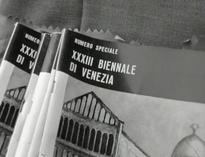
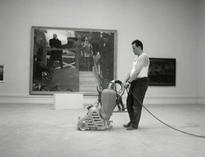
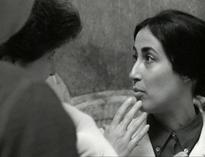
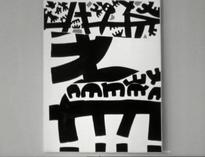
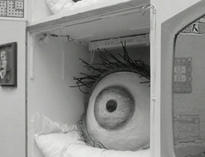
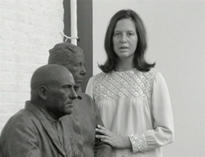
-
za 06.2.2016
19:00 - 21:00 -
Praktische info
Location:
CINEMATEK
Baron Hortastraat 9 Rue Baron Horta
1000 Brussels
www.cinematek.beEntrance fee:
€ 4,00 - Kunstenaars
- Werken